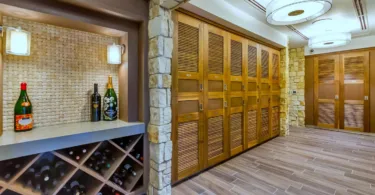When you take the time to save interesting or historically relevant newspapers and magazines, you never want to risk damaging or losing them. Leaving these items in drawers or cabinets will undoubtedly cause them to be mishandled, torn, or lost.
Newsprint deteriorates in approximately 50 years — meaning several thousand people who improperly saved their daily newspapers from, say, John F. Kennedy’s assassination or the first moon landing are finding that their historical documents are now being lost to the ages.
There’s also the problem of clutter. Save too many historical newspapers or memorable magazines, and you have an increasingly unfeasible situation: lots of papers, no place to store them, and the effects of wear, tear, and time slowly turning them to a pulp.
An option like using local self-storage is quite attractive, where you know the documents will be safe from curious hands or household catastrophes.
But if you store your newspapers at home, there are ways to keep your collectibles safe and your home uncluttered. Read on to find out how to preserve old newspapers for future generations.

How to Store Newspapers and Magazines So They Last
1. Create a sorting system.
The obvious way to sort your newspapers or magazines is by year, but if you have specific interests (elections, disasters, cultural events), these categories will work as a system, as well.
The sorting system will allow you to quickly access specific documents when you want to remember a big day or share the past with friends and family — and you won’t have to scatter 30 other papers across the floor to find the one you want.
2. Don’t display the original.
Sunlight, air, water, the oil from your fingertips — all of these things are terrible for documents. If you have historical newspapers that you want to display in your home (classy move, by the way), make a photocopy. That faux DEWEY DEFEATS TRUMAN front page will still look good in a nice frame.
3. Storage is crucial.
You can hire an expert to de-acidify your newspapers, but that is prohibitively expensive — as much as $50 per page. The more economical bet is purchasing acid-free boxes and wrapping the newspapers or magazines in acid-free tissue. Leave a little room in the box for air circulation.
If you want to get elaborate, use the boxes where commercial printers store metal plates. Tracking these down may be difficult, but they are made specifically to keep out air and elements — in other words, they are ideal storage for your documents.
4. Control your climate.
Keeping your box of historical newspapers in the garage, attic, basement, etc., is a terrible idea. Newspapers need to be saved somewhere dry and warm. Consider climate-controlled self-storage, where you can ensure the environment will be appropriate for your prized possessions.
5. Keep exposure to a minimum.
Over time, it will be tempting to fish out those newspapers and magazines from 20, 30, 40 years past and revel in days gone by. It’s only natural to want to reflect.
Try to keep these trips down memory lane to a minimum. Handling and exposure only help to ruin those documents. It’s a bit of a sad paradox — preserving history removes your ability to enjoy it to a certain extent.
Take solace — and pride — in knowing you are saving a piece of the past for the future.
FAQs: How to Store Newspapers
What are some ideas for storing newspapers?
- Plastic newspaper sleeves. Make sure they’re acid-free and made from polypropylene. You can then put your newspapers inside these sleeves and put the sleeves into a binder.
- Archival boxes and tissue. These preserve your newspaper clippings from the elements. Again, make sure they’re acid-free.
- Create a digital scan. Instead of holding onto the physical copy, in this technological age, consider scanning the newspaper and creating a digital file instead; it’ll last much longer!
Should you laminate newspaper articles?
Whatever you do, don’t laminate newspapers! The National Archives advises against it.
Does framing a newspaper preserve it?
Framing a newspaper can help preserve it by protecting it from scratches, thanks to the frame’s glass. However, framing a newspaper will not protect it from sunlight, which can still do plenty of damage.
According to the Alabama Department of Archives & History, “If you really want to display the original, it should be framed using acid-free backing board and kept away from windows. The frame should have special glass that blocks harmful ultraviolet (UV) light.”
Is it worth keeping old newspapers?
Only you can say if it’s worth it for you! There is something special about pulling out the tangible newspaper and walking down memory lane.
Why do people keep old newspapers?
People keep old newspapers to remember important personal events (such as a wedding announcement or obituary) or preserve a piece of history for future generations (such as saving a newspaper clipping from a significant historical event).
Learning How to Store Newspapers Can Pay Off, at Least Sentimentally
Whatever your reasons for wanting to preserve old newspapers, you can ensure that history is never forgotten by following these tips.
Update: This post was originally published on February 26th, 2014. It was revised on July 17, 2023 with more information.







